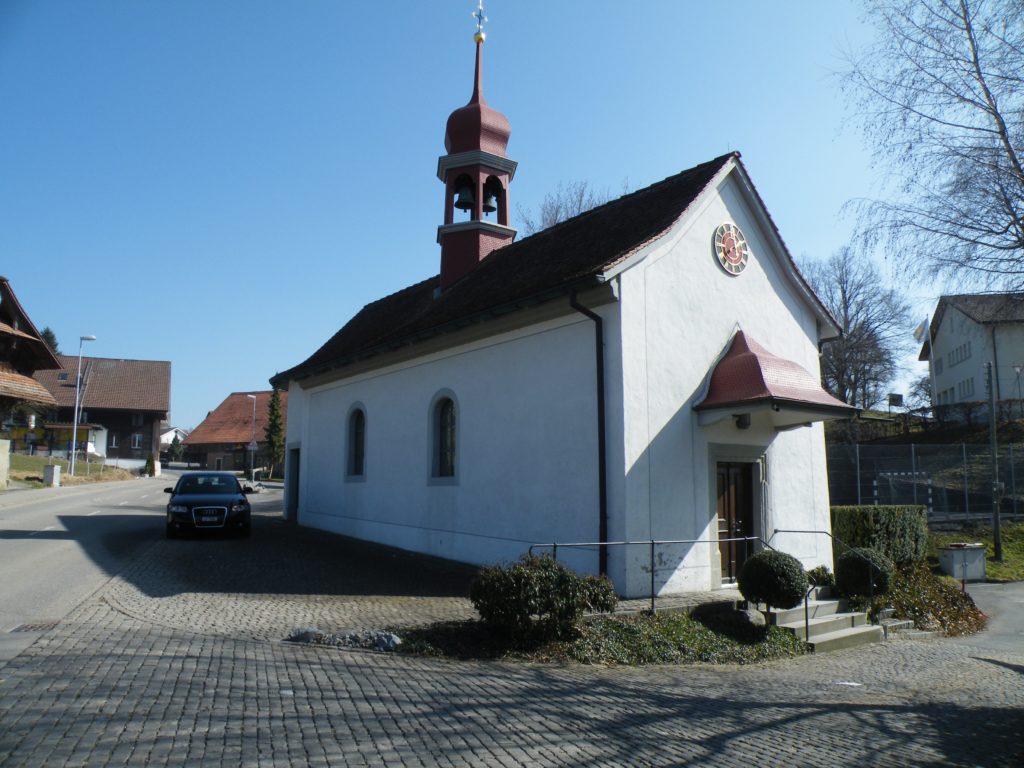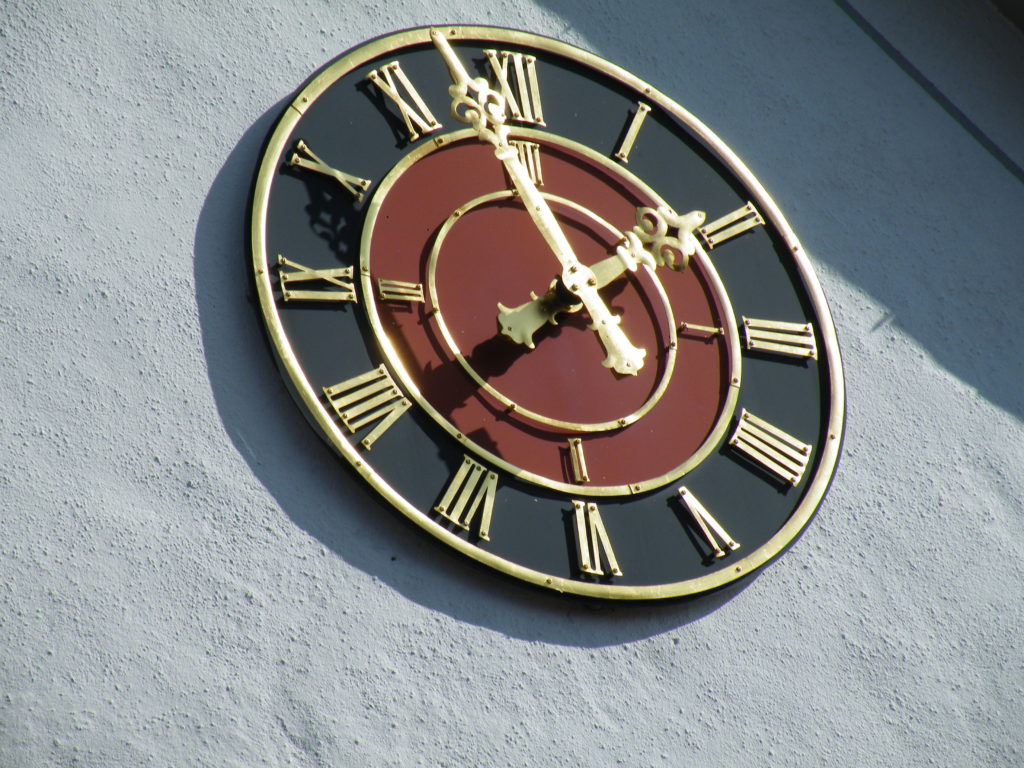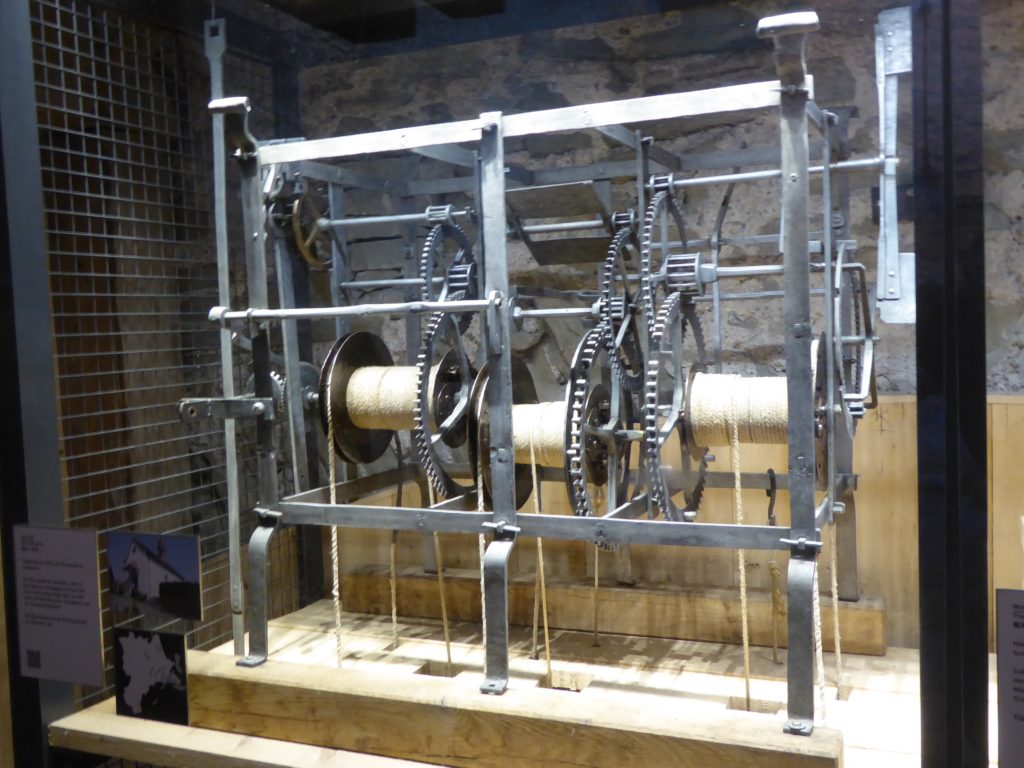
The Lieli clock
Lieli, situated half way up the Lindenberg, had been part of the dominion of Heidegg since 1431. In 1594 the brotherhood of St. Wendelin sponsored the building of a chapel which was erected in the heart of the village. During this period of time the City and Republic of Lucerne were severely hit by a plague epidemic. The church (chapel) of St. Wendelin was refurbished various times. In 1752 a new choir with adjoining sacristy were added to the structure. In 1772 the steeple was refurbished and in 1794 the abbot of Muri AG donated a new bell. Since 1684 a cycle of paintings depicting the life and death of St. Wendelin has decorated the interior of the church. The clock-face was not fitted on the belfry but on the west façade of the chapel. It is supposed that the Lieli clock was manufactured in the early 17th century. It was built in a rather filigree and elegant way and has a clock-work, a quarter hour striking work and a full hour striking work. The works are placed – according to old building measures – one behind the other. Approximately around 1850 the clock-work was converted into a pivot escapement. In the previous century the movement of the clock was subsequently galvanized; older engravings therefore disappeared making it impossible to date the master hallmarks and the building year. A special feature of this tower-clock is the winding-up of the works through a loop of a rope pull.


